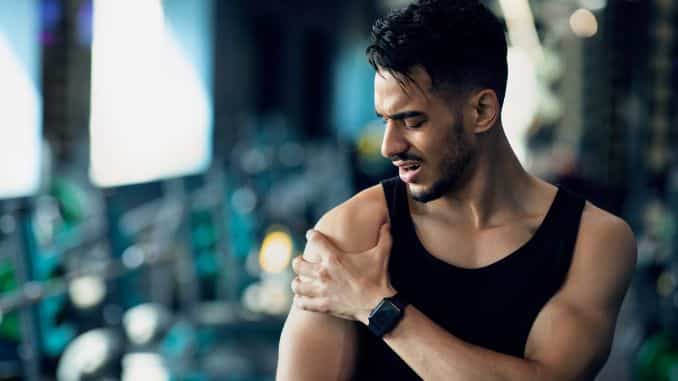
Pull-ups [1] are a staple bodyweight exercise that builds upper body strength, targeting the back muscles, biceps, and forearms.
However, improper form, muscular imbalances, or overuse can lead to pull-up injuries, including shoulder impingement, rotator cuff strain, and elbow pain.
Factors like grip width, body position, and scapular retraction are crucial in injury prevention. Understanding these risks can help you train smarter and avoid setbacks.
What Are the Risk Factors for Pull-Up Injuries?
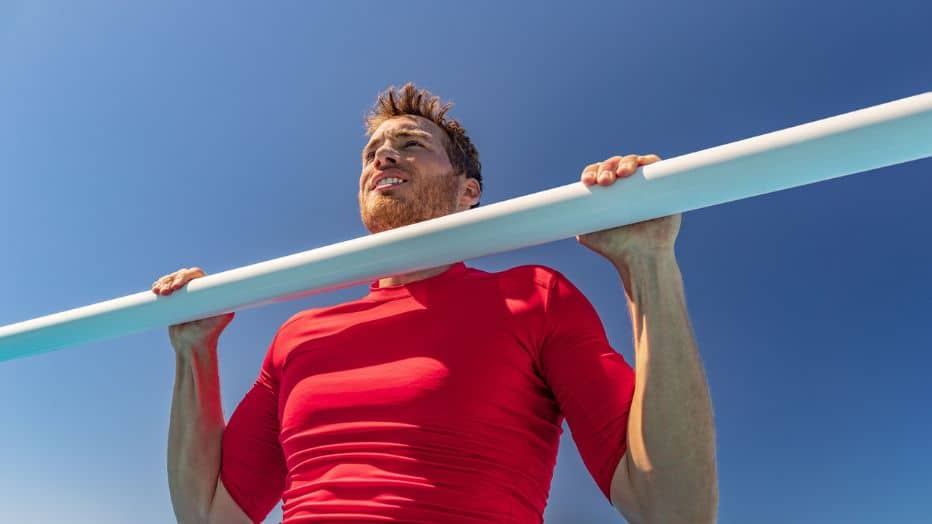
Several factors increase the risk of injury when performing pull-ups, including:
- Poor Form: Using improper technique puts excessive strain on your shoulders, elbows, and wrists.
- Overuse: Performing too many pull-ups without adequate recovery can lead to repetitive strain injuries.
- Lack of Mobility: Tight shoulders or limited range of motion can make pull-ups stressful on your joints.
- Insufficient Warm-Up: Jumping straight into pull-ups without preparing your muscles can lead to sudden injuries.
- Weak Grip or Forearm Muscles: Weak supporting muscles increase the chance of wrist and elbow injuries.
- Pre-existing Conditions: Previous shoulder, elbow, or wrist injuries can make pull-ups more dangerous.
Physiotherapist Naveena Seethapathy warns that a weak grip is a common cause of pull-up injuries, often leading to compensatory stress on the forearms, shoulders, and elbows. She advises strengthening grip and forearm muscles to reduce injury risks and improve overall performance.
What Are the Symptoms of Pull-Up Injuries?
Common signs of a pull-up-related injury include:
- Shoulder Pain: [2] Rotator cuff, strain, impingement, or labrum tears can occur due to improper mechanics.
- Elbow Pain: Medial or lateral epicondylitis (golfer’s elbow or tennis elbow) is common from overuse.
- Wrist Discomfort: Strain from excessive gripping or improper hand placement can cause pain.
- Muscle Soreness vs. Injury Pain: While soreness is normal, sharp or persistent pain should not be ignored.
- Tendonitis or Inflammation: Repetitive movements can inflame tendons, causing stiffness and discomfort.
What Are the Potential Complications of Pull-Up Injuries?
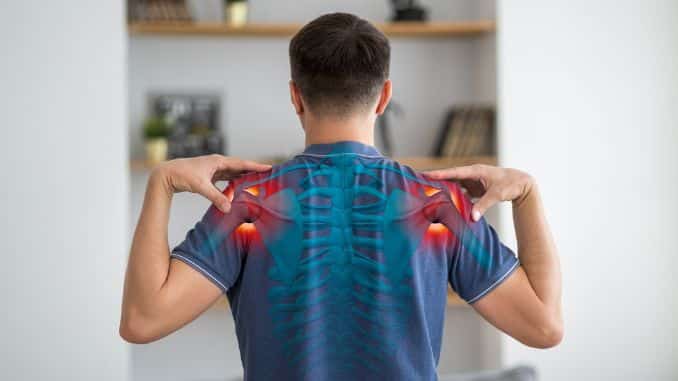
If left untreated, pull-up injuries can lead to:
- Chronic Pain: [3] Ignoring minor injuries can turn them into long-term issues.
- Reduced Range of Motion: Shoulder or elbow injuries can limit movement and flexibility.
- Weakness in the Upper Body: Muscle imbalances may develop due to avoiding certain movements.
- Surgery Requirements: Severe injuries, like rotator cuff tears, may require surgical intervention.
- Long-Term Tendon Damage: Overuse injuries, if untreated, can result in degenerative tendon conditions.
How Can You Prevent Pull-Up Injuries?
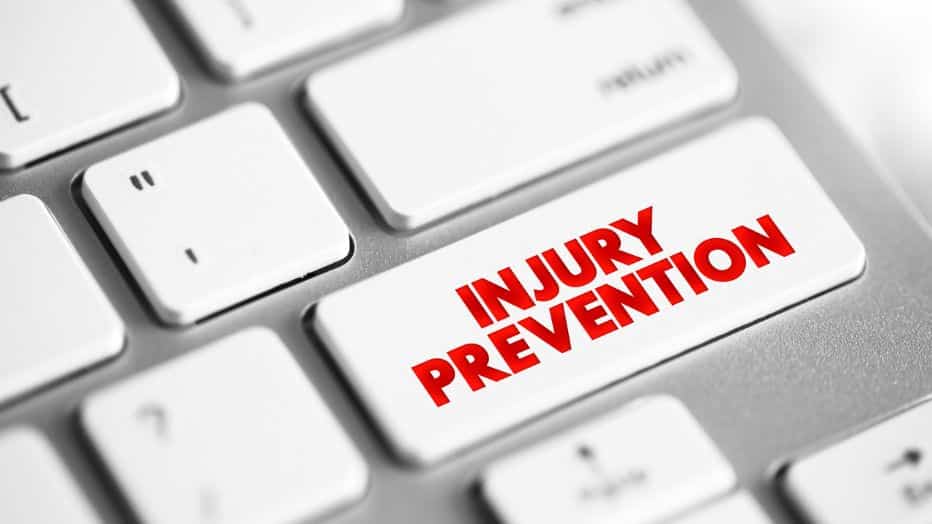
Preventing injuries starts with proper preparation and technique. Here’s how you can stay safe:
- Warm Up Properly: Perform shoulder mobility drills, arm swings, and light stretching before pull-ups.
- Use Proper Form: Keep your shoulders engaged, avoid excessive swinging, and maintain a controlled motion.
- Strengthen Supporting Muscles: Train your grip, forearms, and rotator cuff to handle the stress of pull-ups.
- Avoid Overuse: Space out your pull-up sessions to prevent excessive strain.
- Modify if Necessary: Use resistance bands or assisted pull-up machines if needed.
- Listen to your Body: If you feel pain, stop and assess your condition before continuing.
Andrew Millett, a physical therapist at Move Strong Physical Therapy in Hudson, Massachusetts, emphasizes the importance of proper shoulder mobility and stability to prevent pull-up-related injuries.
He suggests that individuals assess their ability to bring their arms comfortably overhead; if limitations exist, incorporating shoulder mobility exercises is crucial.
Additionally, strengthening the rotator cuff, middle and lower trapezius, and serratus anterior muscles can enhance shoulder stability, reducing the risk of pain during pull-ups.
Millett also recommends a gradual progression in pull-up training, starting with assisted variations and focusing on maintaining proper form to prevent overuse injuries.
5 Simple Pull-Up Exercises
Want to build strength while minimizing injury risk? Try these pull-up variations:
1. Scapular Pull-Ups:
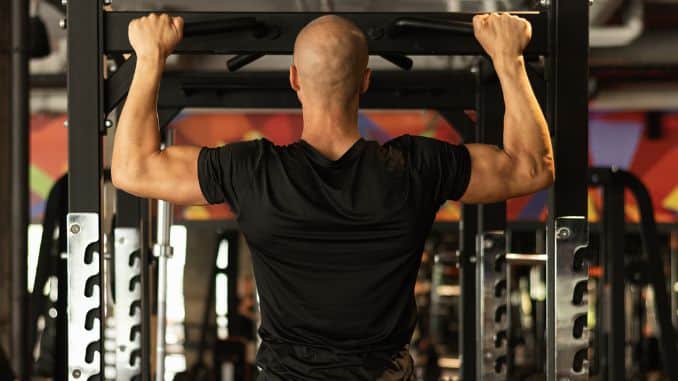
Engages the shoulders and improves pull-up form.
- Begin in an upright standing position below a pull-up bar, with your feet hip-width apart.
- Maintain good alignment with your head, shoulders, hips, and legs.
- Place your hands and grip tightly on the bar wider than shoulder-width apart.
- Engage your core. Bend your arms to pull your body up in a slow and controlled manner.
- Hold the position for 2 seconds, then lower your body to return to the starting position.
- Repeat the movement with 10 repetitions.
2. Negative Pull-Ups
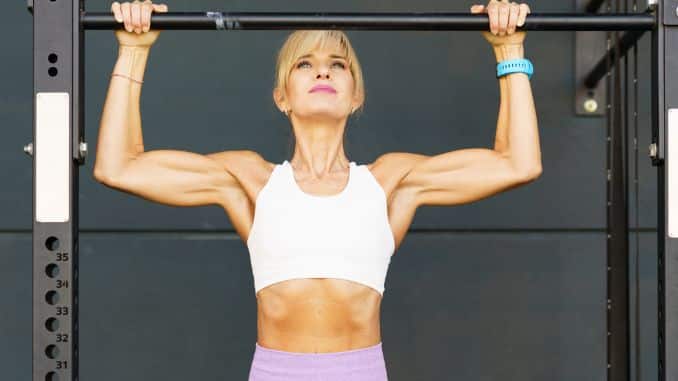
Strengthens muscles through slow, controlled descents.
- Begin in an upright standing position below a pull-up bar with your feet hip-width apart.
- Maintain good alignment with your head, shoulders, hips, and legs.
- Place your hands and grip tightly on the bar wider than shoulder-width apart.
- Engage your core. Bend your arms to pull your body up in a slow and controlled manner, bringing your chin over the pull-up bar.
- Hold the position for 3-5 seconds, then lower your body to return to the starting position.
- Repeat the movement with 10 repetitions.
3. Assisted Band Pull-Ups

Reduces body weight load while improving strength.
- Begin in an upright standing position below a pull-up bar, and place both feet on the loop of the resistance band.
- Place your hands and grip tightly on the bar wider than shoulder-width apart.
- Engage your core. Bend your arms to pull your body up with the band’s assistance in a slow and controlled manner.
- Hold the position for 2 seconds, then lower your body to return to the starting position.
- Repeat the movement with 10 repetitions.
Note: Use a resistance band with the right level of support to assist you, while still providing enough challenge for your muscles.
4. Neutral Grip Pull-Ups
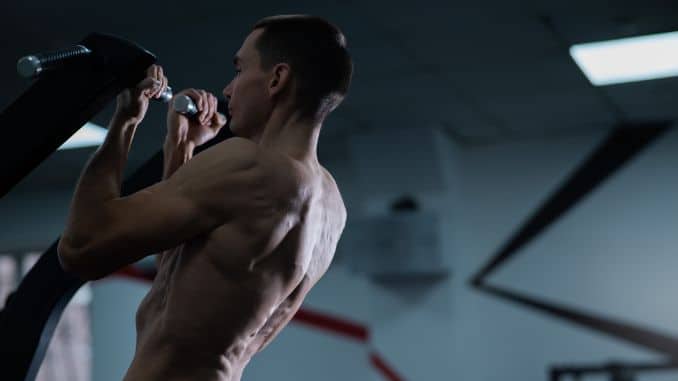
Less strain on the shoulders and elbows.
- Begin in an upright standing position below a pull-up bar with your feet hip-width apart.
- Maintain good alignment with your head, shoulders, hips, and legs.
- Place your hands and grip tightly on the bar with your arms in line with your shoulders.
- Engage your core. Bend your arms to pull your body up in a slow and controlled manner.
- Hold the position for 2 seconds, then lower your body to return to the starting position.
- Repeat the movement with 10 repetitions.
5. Dead Hang Holds
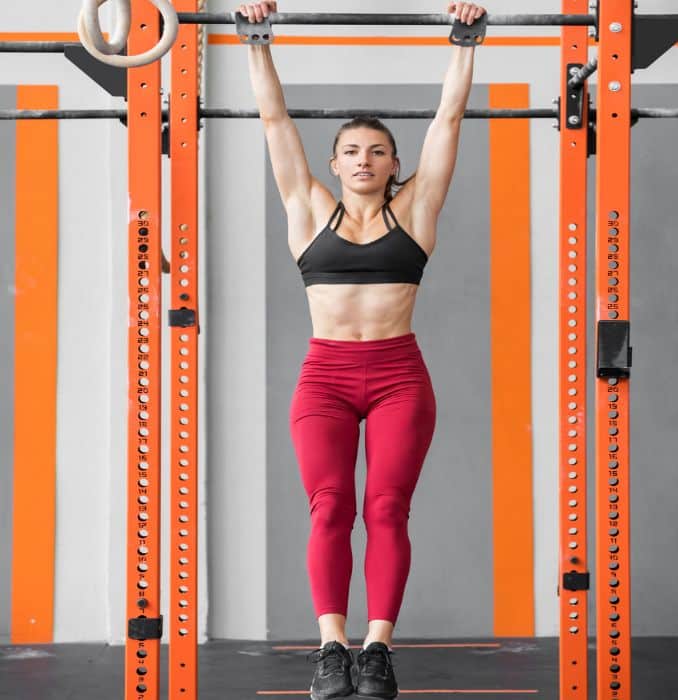
Builds grip strength and shoulder stability.
- Begin in an upright standing position below a pull-up bar with your feet hip-width apart.
- Maintain good alignment with your head, shoulders, hips, and legs.
- Engage your core. Jump to hold your hands and grip tightly on the bar with your arms slightly wider than shoulder-width apart.
- Let your body hang on the pull-up bar. Hold the position for several deep belly breaths, in through your nose and out through your mouth.
How to Work Out with Pull-Up Injuries?
If you’re dealing with a minor pull-up injury, you don’t have to stop working out entirely. Consider these adjustments:
- Reduce Intensity: Perform assisted pull-ups or negatives instead of full pull-ups.
- Modify Your Grip: Try neutral or underhand grips to reduce strain on specific joints.
- Use Alternative Exercises: Lat pulldowns, rows, and scapular pull-ups can help maintain strength while recovering.
- Incorporate Isometric Holds: Holding a pull-up position without movement can reduce stress while keeping muscles active.
- Focus on Mobility and Recovery: Incorporate stretching and resistance band exercises to aid recovery.
How to Manage Pull-Up Injuries?

If you experience pain or discomfort from pull-ups, follow these steps to recover properly:
- Rest and Reduce Activity: Allow the injured area to heal by limiting pull-up volume.
- Apply Ice or Heat: Ice can reduce inflammation, while heat can improve blood flow to the affected area.
- Use Compression and Elevation: This helps minimize swelling and speeds up recovery.
- Stretch and Strengthen: Gentle stretching and targeted strengthening aid in rehabilitation.
- Seek Professional Help: If pain persists, consult a physical therapist or sports doctor.
Final Thoughts
Pull-ups require control, grip strength, and proper form to prevent injuries. Shoulder impingement, rotator cuff strain, and elbow pain are some of the most common causes of discomfort when using a pull-up bar. To avoid these, focus on scapular retraction, grip width, and proper body positioning.
Resistance training, negative pull-ups, and alternative bodyweight exercises like push-ups can help balance muscle groups and prevent muscular imbalances. If an injury occurs, rest, modify your workouts, and seek professional advice if needed. Keep training smart to build more muscle and improve endurance safely.
Ready to master injury-free pull-ups? Explore our expert tips and support resources to enhance your fitness journey! Check out our Tennis Elbow Pain Solution for additional guidance.
FAQ’s
What injury is common with pull-ups?
The most common injuries include rotator cuff strain, elbow tendonitis (tennis or golfer’s elbow), and wrist strain due to excessive grip stress or improper form.
What parts do pull-ups hit?
Pull-ups primarily target the latissimus dorsi (lats), biceps, shoulders, upper back (traps, rhomboids), and forearms.
What is the hardest part of a pull-up?
The initial pull from a dead hang (concentric phase) is the hardest part, as it requires significant upper body and grip strength.
What are the don’ts of pull-ups?
Avoid swinging/kipping (unless intentional), over-gripping, neglecting shoulder engagement, locking out the elbows, and excessive reps without recovery.
What are the risks of pull-ups?
Risks include shoulder impingement, elbow tendonitis, wrist strain, muscle overuse injuries, and improper execution leading to long-term joint issues.

